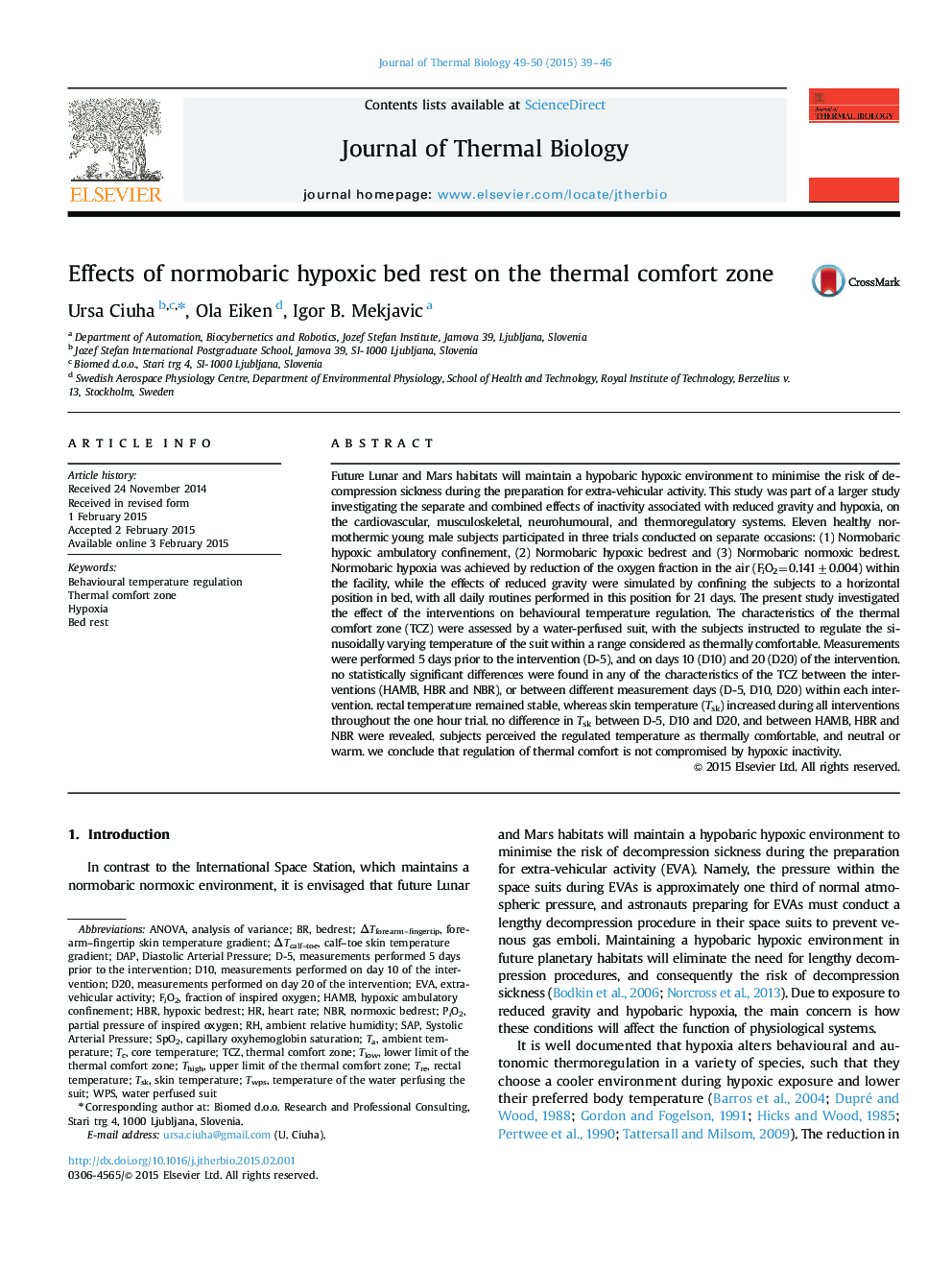| کد مقاله | کد نشریه | سال انتشار | مقاله انگلیسی | نسخه تمام متن |
|---|---|---|---|---|
| 2842756 | 1571096 | 2015 | 8 صفحه PDF | دانلود رایگان |
• Separate and combined effects of reduced gravity and hypoxia.
• Simulation with the horizontal bed rest and exposure to normobric hypoxia.
• The effect on the perception of thermal comfort in humans.
• Behavioural thermoregulation was not affected by separate and combined effects.
Future Lunar and Mars habitats will maintain a hypobaric hypoxic environment to minimise the risk of decompression sickness during the preparation for extra-vehicular activity. This study was part of a larger study investigating the separate and combined effects of inactivity associated with reduced gravity and hypoxia, on the cardiovascular, musculoskeletal, neurohumoural, and thermoregulatory systems. Eleven healthy normothermic young male subjects participated in three trials conducted on separate occasions: (1) Normobaric hypoxic ambulatory confinement, (2) Normobaric hypoxic bedrest and (3) Normobaric normoxic bedrest. Normobaric hypoxia was achieved by reduction of the oxygen fraction in the air (FiO2=0.141±0.004) within the facility, while the effects of reduced gravity were simulated by confining the subjects to a horizontal position in bed, with all daily routines performed in this position for 21 days. The present study investigated the effect of the interventions on behavioural temperature regulation. The characteristics of the thermal comfort zone (TCZ) were assessed by a water-perfused suit, with the subjects instructed to regulate the sinusoidally varying temperature of the suit within a range considered as thermally comfortable. Measurements were performed 5 days prior to the intervention (D-5), and on days 10 (D10) and 20 (D20) of the intervention. no statistically significant differences were found in any of the characteristics of the TCZ between the interventions (HAMB, HBR and NBR), or between different measurement days (D-5, D10, D20) within each intervention. rectal temperature remained stable, whereas skin temperature (Tsk) increased during all interventions throughout the one hour trial. no difference in Tsk between D-5, D10 and D20, and between HAMB, HBR and NBR were revealed. subjects perceived the regulated temperature as thermally comfortable, and neutral or warm. we conclude that regulation of thermal comfort is not compromised by hypoxic inactivity.
Journal: Journal of Thermal Biology - Volumes 49–50, April–May 2015, Pages 39–46
